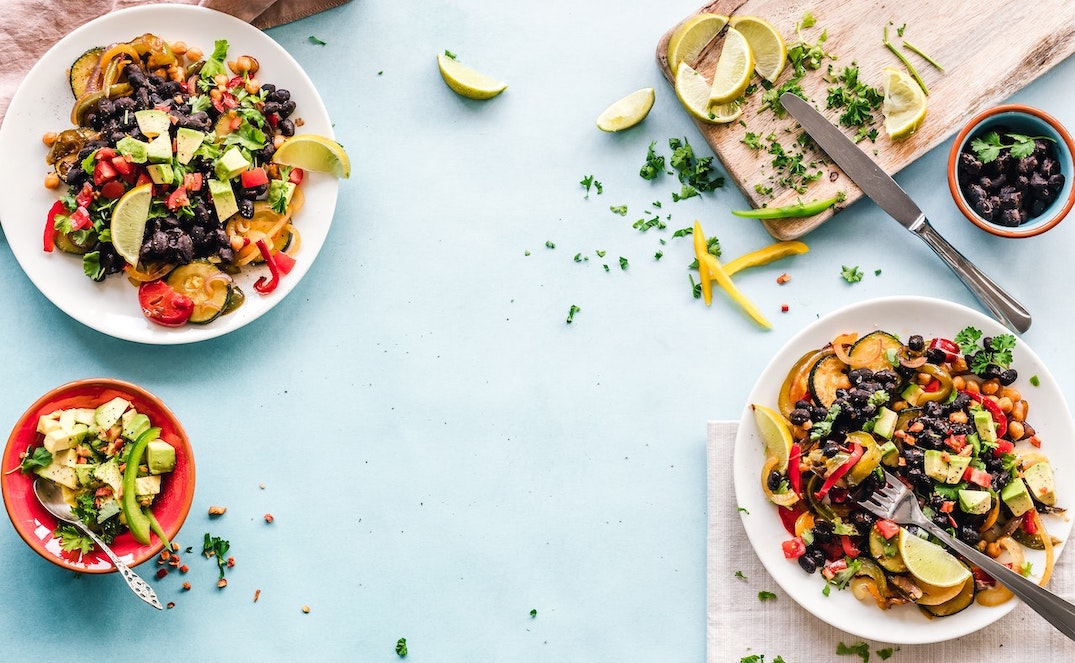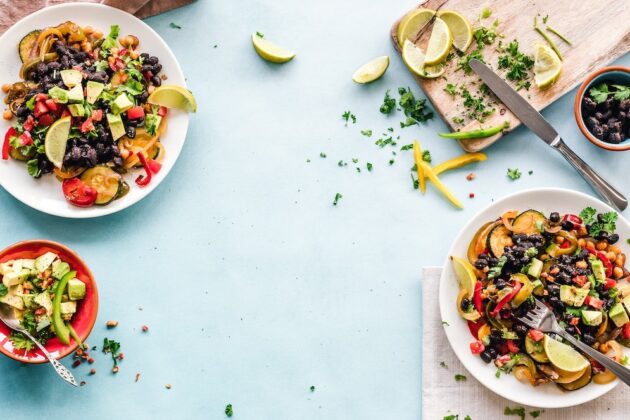Best Nuts for Weight Loss
Did you know that nuts are good for your health? Yes, they’re high in calories, but nuts are also packed with fiber, healthy fats, protein, vitamins, and minerals. Studies show that eating nuts may help lower the risk of heart disease, control blood sugar, and reduce inflammation.
Nuts have also been shown to help with weight loss. This is because the fiber, protein, and healthy fats in nuts make you feel fuller for longer. However, it’s important to make sure you’re eating the correct portion size because nuts are calorie-dense.
Some of the best nuts for weight loss include almonds, pistachios, walnuts, and Brazil nuts. These nuts are rich in nutrients that make up a healthy, well-balanced diet.
This guide goes over how nuts can help with weight loss, the best nuts to eat for weight loss, and some of the other health benefits of nuts.
Best nuts for weight loss
When enjoyed in moderation, all nuts can help support weight loss. However, different types of nuts have different nutritional compositions. This means that some are better for weight loss than others.
Here is a list of the nine best nuts for weight loss:
Almonds
Almonds are one of the most popular snack nuts in the United States. At the grocery store, you can find them raw, roasted, salted, and even seasoned with different flavors. Plain, raw almonds have a nutty, slightly fruity flavor that becomes more earthy when roasted.
Compared to most other tree nuts, almonds have the most protein and fiber per one-ounce serving. With six grams of protein and four grams of fiber, snacking on almonds is sure to keep you feeling full and satisfied between meals. This can help prevent you from overeating.
Almonds are also thought to help manage blood sugar levels, reduce blood pressure, and lower bad cholesterol.
- Serving Size: One ounce (about 23 nuts)
- Calories: 160
- Fat: 14 grams
- Protein: 6 grams
- Fiber: 4 grams
- Vitamin E: 7.3 mg (50% DV)
- Magnesium: 77 mg (20% DV)
- Copper: 0.29 mg (30% DV)
- Manganese: 0.62 mg (25% DV)
Walnuts
Walnuts are high-fat, oily nuts with a mild, nutty, and slightly bitter flavor. They are most often sold shelled, raw, and unsalted. However, you can also purchase them unshelled.
A one-ounce serving of walnuts provides you with four grams of protein, two grams of fiber, and 18 grams of healthy fat. Replacing a low-nutrient-dense snack with walnuts can help you lose weight because it’s more satisfying and reduces the likelihood of overeating.
Walnuts are also a good source of omega-3 fatty acids, especially alpha-linolenic acid (ALA). Studies have shown that omega-3 fatty acids may have health benefits, particularly for heart health.
- Serving Size: One ounce (about 14 halves)
- Calories: 190
- Fat: 18 grams
- Protein: 4 grams
- Fiber: 2 grams
- Copper: 0.45 mg (50% DV)
- Manganese: 0.97 mg (40% DV)

Reach your weight loss goals faster with support from a Registered Dietitian
90% of Zaya Care patients pay $0 for dietitian visits
Pistachios
Pistachios are typically sold roasted, salted, and unshelled. Many people enjoy snacking on pistachios because they’re fun to crack open and eat. Pistachios are green in color and have a woody, nutty, and slightly sweet flavor.
Each one-ounce serving of pistachios has six grams of protein, three grams of fiber, and only 160 calories. When eaten in place of less nutritious snacks, pistachios can help you lose weight. Not only do pistachios keep you feeling fuller for longer, but cracking the shells open also encourages mindful eating.
Additionally, pistachios are an excellent source of vitamin B6. Vitamin B6 plays an important role in blood sugar regulation and helps the body turn food into energy.
- Serving Size: One ounce (about 40 nuts)
- Calories: 160
- Fat: 13 grams
- Protein: 6 grams
- Fiber: 3 grams
- Vitamin B6: 0.32 mg (20% DV)
- Thiamine: 0.2 mg (15% DV)
- Copper: 0.37 mg (40% DV)
- Manganese: 0.35 mg (15% DV)
Cashews
Cashews are kidney-shaped tree nuts that are usually enjoyed as a snack. They are often sold roasted and salted but can also be purchased raw and unsalted.
Relatively low in fiber compared to other nuts, a single serving of cashews provides four grams of protein, one gram of fiber, and 13 grams of fat. If you’re trying to lose weight, it’s especially important to be mindful of portion size with cashews because of their higher calorie and fat content.
Cashews are high in magnesium, which may help reduce blood pressure, lower the risk of stroke, and prevent osteoporosis.
- Serving Size: One ounce (about 18 nuts)
- Calories: 190
- Fat: 13 grams
- Protein: 4 grams
- Fiber: 1 gram
- Magnesium: 74 mg (20% DV)
- Copper: 0.65 mg (70% DV)
- Zinc: 1.59 mg (15% DV)
Brazil Nuts
Brazil nuts are large, meaty nuts that are grown in the Amazon rainforest. At the grocery store, they are usually sold shelled, raw, and unsalted. They’re mildly sweet and nutty in flavor with an oily mouthfeel and crunchy texture.
A one-ounce serving of Brazil nuts contains four grams of protein and two grams of fiber. Just one Brazil nut also provides you with all the selenium you need in a day. Selenium is an essential trace mineral that helps regulate your metabolism.
Like all nuts, Brazil nuts help you lose weight by keeping you feeling full and satisfied after eating them. However, Brazil nuts, in particular, may have a stronger association with weight loss because of the high amount of selenium per serving.
- Serving Size: One ounce (about 6 nuts)
- Calories: 190
- Fat: 19 grams
- Protein: 4 grams
- Fiber: 2 grams
- Thiamine: 0.18 mg (15% DV)
- Phosphorous: 206 mg (15% DV)
- Magnesium: 107 mg (25% DV)
- Selenium: 543 mcg (990% DV)
- Copper: 0.49 mg (50% DV)
- Manganese: 0.35 mg (15% DV)
Hazelnuts
Hazelnuts are most often used in baked goods and desserts but also make a great, healthy snack. These small, round nuts, also known as filberts, can be purchased raw or roasted. They have a sweet, nutty, and warm flavor.
With four grams of protein and three grams of fiber in a serving of about 21 nuts, hazelnuts are a good snack for weight loss. Like other nuts, snacking on nutrient-rich hazelnuts can reduce your desire to overeat.
While hazelnuts are a healthy snack, it’s important to be aware that some hazelnut-based products are not. For example, hazelnut spreads are often loaded with unhealthy fats and sugar. To maximize hazelnuts’ nutritional benefits, eat them in their whole, unprocessed form.
- Serving Size: One ounce (about 21 nuts)
- Calories: 180
- Fat: 17 grams
- Protein: 4 grams
- Fiber: 3 grams
- Vitamin E: 4.26 mg (30% DV)
- Thiamine: 0.18 mg (15% DV)
- Copper: 0.49 mg (25% DV)
- Manganese: 1.75 mg (80% DV)
Pecans
Pecans are one of the few tree nuts that grow naturally in the United States. They’re typically sold raw and can be enjoyed as a snack or used to add a crunchy texture to salads, vegetable side dishes, and baked goods. Pecans have a sweet, nutty, and buttery flavor.
Higher in calories and fat than most of the other nuts on this list, a one-ounce serving of pecans has three grams of protein, three grams of fiber, and 20 grams of fat. Adding pecans to your diet can make you feel more satisfied and less prone to overeating.
- Serving Size: One ounce (about 19 halves)
- Calories: 200
- Fat: 20 grams
- Protein: 3 grams
- Fiber: 3 grams
- Thiamine: 0.2 mg (15% DV)
- Copper: 0.3 mg (35% DV)
- Manganese: 1.3 mg (60% DV)
Macadamia Nuts
Macadamia nuts are another popular nut used in baking. Rich in healthy fats, macadamia nuts are buttery and slightly sweet in flavor. They are typically sold either raw and unsalted or roasted and salted.
With their high-fat content, macadamia nuts can keep you feeling fuller for longer. However, it’s important to be mindful of your portion size because the calories can quickly add up.
- Serving Size: One ounce (about 10-12 nuts)
- Calories: 200
- Fat: 22 grams
- Protein: 2 grams
- Fiber: 2 grams
- Thiamine: 0.2 mg (15% DV)
- Copper: 0.16 mg (20% DV)
- Manganese: 0.86 mg (35% DV)
Peanuts
Peanuts, while technically a legume, are often grouped with nuts. They also share many of the same health benefits. As a popular snack food, peanuts can be found in a variety of forms and preparations at the grocery store.
Of all the nuts on this list, peanuts are the best source of protein. Each one-ounce serving of peanuts contains seven grams of protein, two and a half grams of fiber, and 14 grams of fat. This nutritionally balanced snack keeps you feeling full and satisfied.
In fact, research shows that eating a serving of peanuts before two meals each day in conjunction with a reduced-calorie diet is as effective as a traditional low-fat diet for weight loss.
- Serving Size: One ounce (about 35 peanuts)
- Calories: 160
- Fat: 14 grams
- Protein: 7 grams
- Fiber: 2.5 grams
- Thiamine: 0.18 mg (15% DV)
- Folate: 68 mcg (17% DV)
- Magnesium: 48 mg (12% DV)
- Copper: 0.32 mg (36% DV)
- Manganese: 0.55 mg (27% DV)

Reach your weight loss goals faster with support from a Registered Dietitian
90% of Zaya Care patients pay $0 for dietitian visits
How eating healthy nuts can help with weight loss
Even though nuts are calorie-dene, they can help with weight loss. This is especially true if you replace low-nutrient-dense foods in your diet with nuts.
Nuts have a balanced nutritional profile that makes them especially helpful for keeping you feeling full and satisfied. When you feel satisfied after eating, you are less likely to overeat.
Nuts also are rich in vitamins and minerals. These micronutrients play an important role in overall health, well-being, and energy levels. It’s possible that opting for nuts instead of processed snacks helps you feel good enough to maintain a healthy and active lifestyle.
How to make sure you’re not eating too many nuts
A typical serving of nuts is one ounce. The number of nuts per serving varies depending on the size and shape of the nut. You can expect to consume between 160 and 200 calories per one-ounce serving of nuts.
Nuts are more calorie-dense than other foods because they are high in fat. Fat contains nine calories per gram, compared to carbohydrates and protein, which each contain four calories per gram.
Since nuts are high in calories and fat, it’s important to make sure you’re not overeating them. The serving size of nuts is only one ounce, or about the size of a small handful. So, you can see how easy it would be to eat too many.
To make sure you’re not eating too many nuts, you first need to know how many calories you’re aiming to eat in a day. Then, you can easily fit nuts into your diet by enjoying them in moderation with other foods.
You may need to swap out other foods in your diet to be able to add nuts without consuming excess calories. Try munching on nuts in place of processed snacks like chips, pretzels, cookies, and candy.
Other benefits of eating healthy nuts
Nuts are not only beneficial when it comes to losing weight. Chock full of vitamins, minerals, and antioxidants, nuts can also improve heart health, reduce inflammation, and boost energy levels.
Here is a list of some of the other benefits of eating healthy nuts:
- Improving heart health. Higher consumption of nuts has been associated with better heart health. Nuts contain omega-3 fatty acids, magnesium, potassium, and other nutrients that are beneficial for your heart.
- Lowering cholesterol levels. Foods high in saturated fats have been linked to high cholesterol. Nuts, which are low in saturated fat, have been shown to help reduce cholesterol levels.
- Reducing inflammation. Nuts are rich in antioxidants and other nutrients that have the potential to reduce inflammation in the body. Reducing inflammation is thought to reduce the risk of developing certain chronic diseases.
- Supporting brain health. Walnuts, in particular, have been studied for their role in supporting brain health. They contain antioxidants and omega-3 fatty acids, both of which may reduce inflammation and improve cognitive function.
- Managing blood sugar levels. Nuts help regulate blood sugar because they digest slowly, providing a gradual release of sugar into the blood. Additionally, there are micronutrients in nuts that may help with managing blood sugar levels.
- Enhancing digestive health. While studies are limited, the fiber in nuts may enhance digestive health by increasing the number of good bacteria in the gut.
- Providing essential nutrients (like vitamins and minerals). Nuts are rich in a wide variety of vitamins and minerals. Eating nuts is a great way to meet the recommended daily intake of many essential nutrients.
- Boosting energy levels. High in calories and B vitamins, nuts are perfect for when you need a quick and easy boost of energy.
- Reducing the risk of certain cancers. There is limited evidence that shows eating nuts may reduce the risk of colon, lung, and pancreatic cancers.
Why you should consider working with a dietitian to lose weight
Consistently eating a healthy, well-balanced diet to lose weight isn’t easy. You may feel confused about what foods are good for you and how much of them you should be eating.
There are many benefits to working with a dietitian including improving digestion, boosting energy, and avoiding nutrient deficiencies, and a dietitian can definitely help you lose weight.
A registered dietitian is a nutrition professional who is trained to give individualized nutrition advice. They can teach you how to eat sustainably to lose weight and help you create a diet plan that works just for you.
You can ask your dietitian any questions you have about specific foods or weight loss diets. They can also teach you how to effectively meal prep for weight loss. Finally, having a dietitian on your team can help you remain motivated and consistent by providing accountability.
Here at Zaya Care, we’re dedicated to helping people find the care they need based on their preferences, needs, and insurance. Many dietitians are covered by insurance.
When you request an appointment with one of our Registered Dietitians, we’ll check your insurance so you know exactly how much you’ll have to pay, if anything at all.
It’s worth noting that 90% of Zaya Care patients pay $0 for nutrition care with a registered dietitian as we are in-network with many major carriers.
Eating nuts for weight loss FAQs
Which nuts are best for losing weight?
All nuts can be part of your weight loss plan. However, almonds, pistachios, and peanuts are higher in protein and lower in calories than other nuts which may be helpful when trying to lose weight.
How many nuts should I eat per day for weight loss?
It depends. How many nuts you should eat per day for weight loss differs from person to person based on your overall calorie goal and the types of nuts you like to eat. In general, aim to replace a less nutritious snack with a one-ounce serving of nuts once or twice per day.
Can eating nuts help reduce belly fat?
While there are no foods that specifically target belly fat, adding nuts to your diet can help with overall weight loss. When you lose weight, some of that weight is likely to come from your belly area.
Can I eat nuts if I’m on a low-carb diet?
Yes! All unseasoned nuts are low in carbs, making them the perfect snack for a low-carb diet. However, be mindful of flavored nut varieties that may be coated with sugar and other seasonings.
Are there any nuts I should avoid for weight loss?
There are no specific nuts that need to be avoided when trying to lose weight. However, it’s important to remember that some nuts have more calories per serving than others. As long as you’re mindful of portion size, you are free to enjoy any type of nuts you like.
Is it okay to eat nuts for breakfast?
Of course! Nuts can be added to oatmeal, smoothies, cereal, and granola bars for a more filling and nutritious breakfast. Again, it’s important to remember that adding nuts adds calories and to portion your breakfast accordingly.
Is it okay to eat nuts for lunch/dinner?
Eating nuts with your lunch or dinner is a great way to add a boost of fiber, protein, and healthy fats to your meal. They can be used as a salad or soup topping, mixed with vegetable or grain side dishes, or crushed and used as a coating for protein.
Can nuts replace a meal in my diet?
While nuts are a nutritious and filling snack, they are not the best replacement for a well-balanced meal. It’s best to pair nuts with lean protein, whole grains, fruits, and vegetables for a more wholesome and complete meal.
How can I incorporate nuts into a weight-loss diet?
Nuts can be incorporated into a weight loss plan either as a healthy snack or as a tasty addition to meals. When adding nuts to your diet, make sure you know how many calories you’re aiming to eat. Then, carefully measure a portion of nuts and subtract those calories from your daily total.
Are roasted or raw nuts better for weight loss?
Both roasted and raw nuts are good for weight loss. This is because roasting nuts has minimal impact on their calorie and fat content. However, some roasted nuts are coated with excess salt and sugar, so it’s important to always read the nutrition facts label before making a decision.

Reach your weight loss goals faster with support from a Registered Dietitian
90% of Zaya Care patients pay $0 for dietitian visits
Did you know that nuts are good for your health? Yes, they’re high in calories, but nuts are also packed with fiber, healthy fats, protein, vitamins, and minerals. Studies show that eating nuts may help lower the risk of heart disease, control blood sugar, and reduce inflammation.
Nuts have also been shown to help with weight loss. This is because the fiber, protein, and healthy fats in nuts make you feel fuller for longer. However, it’s important to make sure you’re eating the correct portion size because nuts are calorie-dense.
Some of the best nuts for weight loss include almonds, pistachios, walnuts, and Brazil nuts. These nuts are rich in nutrients that make up a healthy, well-balanced diet.
This guide goes over how nuts can help with weight loss, the best nuts to eat for weight loss, and some of the other health benefits of nuts.
Best nuts for weight loss
When enjoyed in moderation, all nuts can help support weight loss. However, different types of nuts have different nutritional compositions. This means that some are better for weight loss than others.
Here is a list of the nine best nuts for weight loss:
Almonds
Almonds are one of the most popular snack nuts in the United States. At the grocery store, you can find them raw, roasted, salted, and even seasoned with different flavors. Plain, raw almonds have a nutty, slightly fruity flavor that becomes more earthy when roasted.
Compared to most other tree nuts, almonds have the most protein and fiber per one-ounce serving. With six grams of protein and four grams of fiber, snacking on almonds is sure to keep you feeling full and satisfied between meals. This can help prevent you from overeating.
Almonds are also thought to help manage blood sugar levels, reduce blood pressure, and lower bad cholesterol.
- Serving Size: One ounce (about 23 nuts)
- Calories: 160
- Fat: 14 grams
- Protein: 6 grams
- Fiber: 4 grams
- Vitamin E: 7.3 mg (50% DV)
- Magnesium: 77 mg (20% DV)
- Copper: 0.29 mg (30% DV)
- Manganese: 0.62 mg (25% DV)
Walnuts
Walnuts are high-fat, oily nuts with a mild, nutty, and slightly bitter flavor. They are most often sold shelled, raw, and unsalted. However, you can also purchase them unshelled.
A one-ounce serving of walnuts provides you with four grams of protein, two grams of fiber, and 18 grams of healthy fat. Replacing a low-nutrient-dense snack with walnuts can help you lose weight because it’s more satisfying and reduces the likelihood of overeating.
Walnuts are also a good source of omega-3 fatty acids, especially alpha-linolenic acid (ALA). Studies have shown that omega-3 fatty acids may have health benefits, particularly for heart health.
- Serving Size: One ounce (about 14 halves)
- Calories: 190
- Fat: 18 grams
- Protein: 4 grams
- Fiber: 2 grams
- Copper: 0.45 mg (50% DV)
- Manganese: 0.97 mg (40% DV)

Reach your weight loss goals faster with support from a Registered Dietitian
90% of Zaya Care patients pay $0 for dietitian visits
Pistachios
Pistachios are typically sold roasted, salted, and unshelled. Many people enjoy snacking on pistachios because they’re fun to crack open and eat. Pistachios are green in color and have a woody, nutty, and slightly sweet flavor.
Each one-ounce serving of pistachios has six grams of protein, three grams of fiber, and only 160 calories. When eaten in place of less nutritious snacks, pistachios can help you lose weight. Not only do pistachios keep you feeling fuller for longer, but cracking the shells open also encourages mindful eating.
Additionally, pistachios are an excellent source of vitamin B6. Vitamin B6 plays an important role in blood sugar regulation and helps the body turn food into energy.
- Serving Size: One ounce (about 40 nuts)
- Calories: 160
- Fat: 13 grams
- Protein: 6 grams
- Fiber: 3 grams
- Vitamin B6: 0.32 mg (20% DV)
- Thiamine: 0.2 mg (15% DV)
- Copper: 0.37 mg (40% DV)
- Manganese: 0.35 mg (15% DV)
Cashews
Cashews are kidney-shaped tree nuts that are usually enjoyed as a snack. They are often sold roasted and salted but can also be purchased raw and unsalted.
Relatively low in fiber compared to other nuts, a single serving of cashews provides four grams of protein, one gram of fiber, and 13 grams of fat. If you’re trying to lose weight, it’s especially important to be mindful of portion size with cashews because of their higher calorie and fat content.
Cashews are high in magnesium, which may help reduce blood pressure, lower the risk of stroke, and prevent osteoporosis.
- Serving Size: One ounce (about 18 nuts)
- Calories: 190
- Fat: 13 grams
- Protein: 4 grams
- Fiber: 1 gram
- Magnesium: 74 mg (20% DV)
- Copper: 0.65 mg (70% DV)
- Zinc: 1.59 mg (15% DV)
Brazil Nuts
Brazil nuts are large, meaty nuts that are grown in the Amazon rainforest. At the grocery store, they are usually sold shelled, raw, and unsalted. They’re mildly sweet and nutty in flavor with an oily mouthfeel and crunchy texture.
A one-ounce serving of Brazil nuts contains four grams of protein and two grams of fiber. Just one Brazil nut also provides you with all the selenium you need in a day. Selenium is an essential trace mineral that helps regulate your metabolism.
Like all nuts, Brazil nuts help you lose weight by keeping you feeling full and satisfied after eating them. However, Brazil nuts, in particular, may have a stronger association with weight loss because of the high amount of selenium per serving.
- Serving Size: One ounce (about 6 nuts)
- Calories: 190
- Fat: 19 grams
- Protein: 4 grams
- Fiber: 2 grams
- Thiamine: 0.18 mg (15% DV)
- Phosphorous: 206 mg (15% DV)
- Magnesium: 107 mg (25% DV)
- Selenium: 543 mcg (990% DV)
- Copper: 0.49 mg (50% DV)
- Manganese: 0.35 mg (15% DV)
Hazelnuts
Hazelnuts are most often used in baked goods and desserts but also make a great, healthy snack. These small, round nuts, also known as filberts, can be purchased raw or roasted. They have a sweet, nutty, and warm flavor.
With four grams of protein and three grams of fiber in a serving of about 21 nuts, hazelnuts are a good snack for weight loss. Like other nuts, snacking on nutrient-rich hazelnuts can reduce your desire to overeat.
While hazelnuts are a healthy snack, it’s important to be aware that some hazelnut-based products are not. For example, hazelnut spreads are often loaded with unhealthy fats and sugar. To maximize hazelnuts’ nutritional benefits, eat them in their whole, unprocessed form.
- Serving Size: One ounce (about 21 nuts)
- Calories: 180
- Fat: 17 grams
- Protein: 4 grams
- Fiber: 3 grams
- Vitamin E: 4.26 mg (30% DV)
- Thiamine: 0.18 mg (15% DV)
- Copper: 0.49 mg (25% DV)
- Manganese: 1.75 mg (80% DV)
Pecans
Pecans are one of the few tree nuts that grow naturally in the United States. They’re typically sold raw and can be enjoyed as a snack or used to add a crunchy texture to salads, vegetable side dishes, and baked goods. Pecans have a sweet, nutty, and buttery flavor.
Higher in calories and fat than most of the other nuts on this list, a one-ounce serving of pecans has three grams of protein, three grams of fiber, and 20 grams of fat. Adding pecans to your diet can make you feel more satisfied and less prone to overeating.
- Serving Size: One ounce (about 19 halves)
- Calories: 200
- Fat: 20 grams
- Protein: 3 grams
- Fiber: 3 grams
- Thiamine: 0.2 mg (15% DV)
- Copper: 0.3 mg (35% DV)
- Manganese: 1.3 mg (60% DV)
Macadamia Nuts
Macadamia nuts are another popular nut used in baking. Rich in healthy fats, macadamia nuts are buttery and slightly sweet in flavor. They are typically sold either raw and unsalted or roasted and salted.
With their high-fat content, macadamia nuts can keep you feeling fuller for longer. However, it’s important to be mindful of your portion size because the calories can quickly add up.
- Serving Size: One ounce (about 10-12 nuts)
- Calories: 200
- Fat: 22 grams
- Protein: 2 grams
- Fiber: 2 grams
- Thiamine: 0.2 mg (15% DV)
- Copper: 0.16 mg (20% DV)
- Manganese: 0.86 mg (35% DV)
Peanuts
Peanuts, while technically a legume, are often grouped with nuts. They also share many of the same health benefits. As a popular snack food, peanuts can be found in a variety of forms and preparations at the grocery store.
Of all the nuts on this list, peanuts are the best source of protein. Each one-ounce serving of peanuts contains seven grams of protein, two and a half grams of fiber, and 14 grams of fat. This nutritionally balanced snack keeps you feeling full and satisfied.
In fact, research shows that eating a serving of peanuts before two meals each day in conjunction with a reduced-calorie diet is as effective as a traditional low-fat diet for weight loss.
- Serving Size: One ounce (about 35 peanuts)
- Calories: 160
- Fat: 14 grams
- Protein: 7 grams
- Fiber: 2.5 grams
- Thiamine: 0.18 mg (15% DV)
- Folate: 68 mcg (17% DV)
- Magnesium: 48 mg (12% DV)
- Copper: 0.32 mg (36% DV)
- Manganese: 0.55 mg (27% DV)

Reach your weight loss goals faster with support from a Registered Dietitian
90% of Zaya Care patients pay $0 for dietitian visits
How eating healthy nuts can help with weight loss
Even though nuts are calorie-dene, they can help with weight loss. This is especially true if you replace low-nutrient-dense foods in your diet with nuts.
Nuts have a balanced nutritional profile that makes them especially helpful for keeping you feeling full and satisfied. When you feel satisfied after eating, you are less likely to overeat.
Nuts also are rich in vitamins and minerals. These micronutrients play an important role in overall health, well-being, and energy levels. It’s possible that opting for nuts instead of processed snacks helps you feel good enough to maintain a healthy and active lifestyle.
How to make sure you’re not eating too many nuts
A typical serving of nuts is one ounce. The number of nuts per serving varies depending on the size and shape of the nut. You can expect to consume between 160 and 200 calories per one-ounce serving of nuts.
Nuts are more calorie-dense than other foods because they are high in fat. Fat contains nine calories per gram, compared to carbohydrates and protein, which each contain four calories per gram.
Since nuts are high in calories and fat, it’s important to make sure you’re not overeating them. The serving size of nuts is only one ounce, or about the size of a small handful. So, you can see how easy it would be to eat too many.
To make sure you’re not eating too many nuts, you first need to know how many calories you’re aiming to eat in a day. Then, you can easily fit nuts into your diet by enjoying them in moderation with other foods.
You may need to swap out other foods in your diet to be able to add nuts without consuming excess calories. Try munching on nuts in place of processed snacks like chips, pretzels, cookies, and candy.
Other benefits of eating healthy nuts
Nuts are not only beneficial when it comes to losing weight. Chock full of vitamins, minerals, and antioxidants, nuts can also improve heart health, reduce inflammation, and boost energy levels.
Here is a list of some of the other benefits of eating healthy nuts:
- Improving heart health. Higher consumption of nuts has been associated with better heart health. Nuts contain omega-3 fatty acids, magnesium, potassium, and other nutrients that are beneficial for your heart.
- Lowering cholesterol levels. Foods high in saturated fats have been linked to high cholesterol. Nuts, which are low in saturated fat, have been shown to help reduce cholesterol levels.
- Reducing inflammation. Nuts are rich in antioxidants and other nutrients that have the potential to reduce inflammation in the body. Reducing inflammation is thought to reduce the risk of developing certain chronic diseases.
- Supporting brain health. Walnuts, in particular, have been studied for their role in supporting brain health. They contain antioxidants and omega-3 fatty acids, both of which may reduce inflammation and improve cognitive function.
- Managing blood sugar levels. Nuts help regulate blood sugar because they digest slowly, providing a gradual release of sugar into the blood. Additionally, there are micronutrients in nuts that may help with managing blood sugar levels.
- Enhancing digestive health. While studies are limited, the fiber in nuts may enhance digestive health by increasing the number of good bacteria in the gut.
- Providing essential nutrients (like vitamins and minerals). Nuts are rich in a wide variety of vitamins and minerals. Eating nuts is a great way to meet the recommended daily intake of many essential nutrients.
- Boosting energy levels. High in calories and B vitamins, nuts are perfect for when you need a quick and easy boost of energy.
- Reducing the risk of certain cancers. There is limited evidence that shows eating nuts may reduce the risk of colon, lung, and pancreatic cancers.
Why you should consider working with a dietitian to lose weight
Consistently eating a healthy, well-balanced diet to lose weight isn’t easy. You may feel confused about what foods are good for you and how much of them you should be eating.
There are many benefits to working with a dietitian including improving digestion, boosting energy, and avoiding nutrient deficiencies, and a dietitian can definitely help you lose weight.
A registered dietitian is a nutrition professional who is trained to give individualized nutrition advice. They can teach you how to eat sustainably to lose weight and help you create a diet plan that works just for you.
You can ask your dietitian any questions you have about specific foods or weight loss diets. They can also teach you how to effectively meal prep for weight loss. Finally, having a dietitian on your team can help you remain motivated and consistent by providing accountability.
Here at Zaya Care, we’re dedicated to helping people find the care they need based on their preferences, needs, and insurance. Many dietitians are covered by insurance.
When you request an appointment with one of our Registered Dietitians, we’ll check your insurance so you know exactly how much you’ll have to pay, if anything at all.
It’s worth noting that 90% of Zaya Care patients pay $0 for nutrition care with a registered dietitian as we are in-network with many major carriers.
Eating nuts for weight loss FAQs
Which nuts are best for losing weight?
All nuts can be part of your weight loss plan. However, almonds, pistachios, and peanuts are higher in protein and lower in calories than other nuts which may be helpful when trying to lose weight.
How many nuts should I eat per day for weight loss?
It depends. How many nuts you should eat per day for weight loss differs from person to person based on your overall calorie goal and the types of nuts you like to eat. In general, aim to replace a less nutritious snack with a one-ounce serving of nuts once or twice per day.
Can eating nuts help reduce belly fat?
While there are no foods that specifically target belly fat, adding nuts to your diet can help with overall weight loss. When you lose weight, some of that weight is likely to come from your belly area.
Can I eat nuts if I’m on a low-carb diet?
Yes! All unseasoned nuts are low in carbs, making them the perfect snack for a low-carb diet. However, be mindful of flavored nut varieties that may be coated with sugar and other seasonings.
Are there any nuts I should avoid for weight loss?
There are no specific nuts that need to be avoided when trying to lose weight. However, it’s important to remember that some nuts have more calories per serving than others. As long as you’re mindful of portion size, you are free to enjoy any type of nuts you like.
Is it okay to eat nuts for breakfast?
Of course! Nuts can be added to oatmeal, smoothies, cereal, and granola bars for a more filling and nutritious breakfast. Again, it’s important to remember that adding nuts adds calories and to portion your breakfast accordingly.
Is it okay to eat nuts for lunch/dinner?
Eating nuts with your lunch or dinner is a great way to add a boost of fiber, protein, and healthy fats to your meal. They can be used as a salad or soup topping, mixed with vegetable or grain side dishes, or crushed and used as a coating for protein.
Can nuts replace a meal in my diet?
While nuts are a nutritious and filling snack, they are not the best replacement for a well-balanced meal. It’s best to pair nuts with lean protein, whole grains, fruits, and vegetables for a more wholesome and complete meal.
How can I incorporate nuts into a weight-loss diet?
Nuts can be incorporated into a weight loss plan either as a healthy snack or as a tasty addition to meals. When adding nuts to your diet, make sure you know how many calories you’re aiming to eat. Then, carefully measure a portion of nuts and subtract those calories from your daily total.
Are roasted or raw nuts better for weight loss?
Both roasted and raw nuts are good for weight loss. This is because roasting nuts has minimal impact on their calorie and fat content. However, some roasted nuts are coated with excess salt and sugar, so it’s important to always read the nutrition facts label before making a decision.

Reach your weight loss goals faster with support from a Registered Dietitian
90% of Zaya Care patients pay $0 for dietitian visits
















